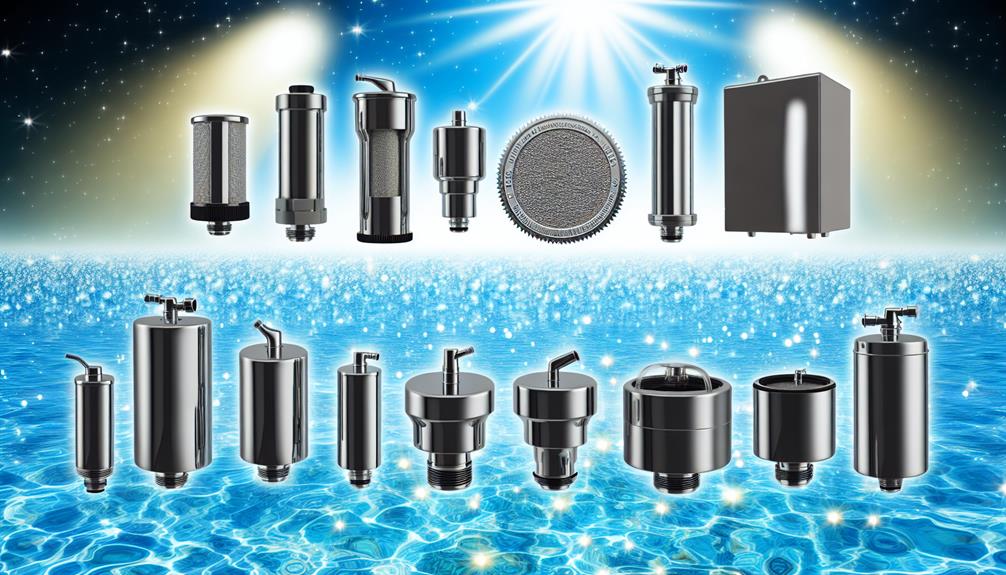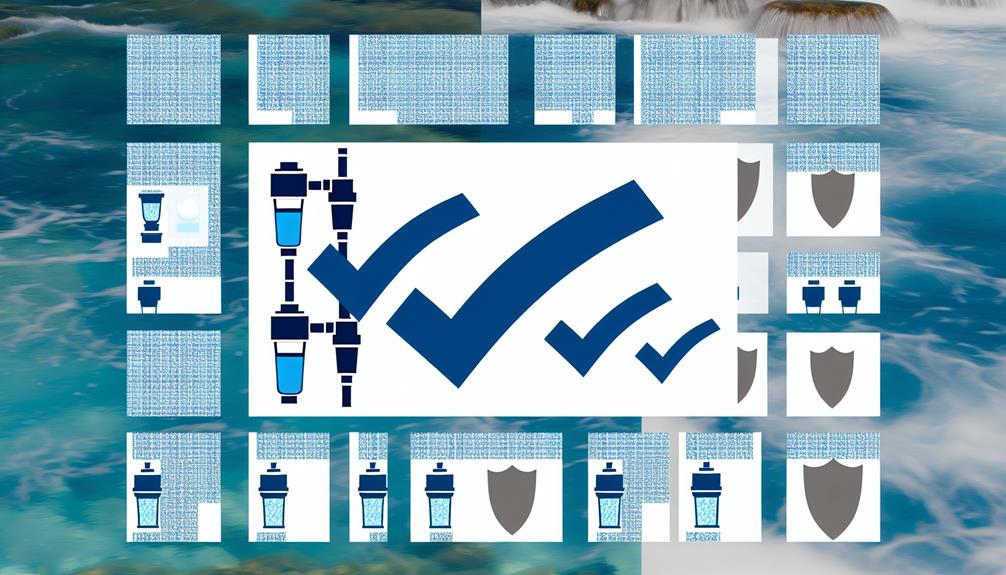As you stand before the vast sea of water purifiers on the market, the waves of technical jargon and specs can be daunting. It's imperative you navigate these waters with a discerning eye, as the safety of your drinking water hinges on the choices you make.
This guide serves as a compass, directing you through the standards and certifications that distinguish a reliable water purifier from a mere vessel of empty promises. You'll learn not only about the different types of filtration methods but also about the maintenance and performance indicators that are crucial for ongoing water quality.
With potential hazards such as lead, arsenic, and other contaminants lurking in unfiltered water, it's essential to equip yourself with knowledge. And as you stand on the brink of making an informed decision, remember that the purity of every drop of water you consume could well depend on the next steps you take.
Understanding Contaminant Levels
To adequately safeguard your household's health, it's essential to delve into water quality reports and discern the specific contaminant levels present in your drinking water. These reports, mandated by the Environmental Protection Agency (EPA), offer a comprehensive analysis of your water's safety. They not only list the contaminants detected but also measure their concentrations against established water quality standards.
When you're analyzing these reports, focus on the contaminants identified and their correlation to the EPA's maximum contaminant level goals (MCLGs). These goals are set to prevent any potential health effects from contaminants in drinking water. However, it's important to remember that some contaminants might be present in trace amounts beneath these legal thresholds. To reduce the amount of these substances to safer levels, you might need a targeted filtration system.
Different filters are designed to tackle specific contaminants. For instance, if your water quality report indicates elevated levels of lead, fluoride, arsenic, or PFAS, you should look for a filtration system that meets NSF Standard requirements for reducing those particular substances. A detailed understanding of the contaminants in your region's water supply enables you to select a drinking water treatment solution that ensures safe drinking water for your family.
Types of Filtration Methods
Understanding the contaminant levels in your water is the first step; selecting the right filtration method to effectively reduce those impurities is the next critical action.
The diversity of filtration methods available can be tailored to address a range of concerns, from taste to specific contaminants such as PFAS. Here's an analytical breakdown of the key technologies:
- Reverse Osmosis Systems: These are highly effective at removing a broad spectrum of contaminants, including volatile organic compounds and hard water minerals. They work by forcing water through a semi-permeable membrane that blocks impurities.
- Activated Carbon Filters: Utilizing adsorption, they capture contaminants like chlorine and some pesticides. These filters are common in carafe and faucet-mounted units.
- Ion Exchange Units: Typically used to soften water, ion exchange replaces hard water minerals with sodium ions, preventing scale buildup.
- UV Treatment: This method uses ultraviolet light to disinfect water, killing bacteria and viruses without adding chemicals.
When choosing a filtration system, it's vital to ensure it meets NSF/ANSI standards for the specific contaminants you're concerned about. The price and maintenance of filters vary significantly, so consider the total cost, including installation and replacement, when making your decision. Opting for a certified filter ensures that your chosen solution is effective at removing the contaminants from drinking water that you're aiming to address.
Certifications and Compliance
When selecting a water purifier, ensure it carries certifications from reputable third-party agencies such as NSF International, which confirm the filter's effectiveness in reducing specific contaminants. NSF/ANSI 53 or NSF/ANSI 58 are critical standards to look for in a certified water filtration product, especially if you're concerned about the presence of lead in your drinking water systems. These certifications indicate a water treatment system's capacity to significantly reduce hazardous contaminants and safeguard public health.
NSF-certified filters undergo rigorous testing to verify their claims of removing specific contaminants from contaminated water. For instance, under-sink dual-stage and reverse osmosis filters, when NSF certified, demonstrate near-complete removal of perfluoroalkyl and polyfluoroalkyl substances (PFAS), which can be hazardous to your health. However, beware that not all activated carbon filters are equally effective; while some may be NSF certified, they may not reliably remove all PFAS.
It's also essential to rely on independent product reviews to confirm the quality of your filter. If you're a private well owner, engaging state-certified labs for accurate PFAS water testing is advisable, as standard NSF certifications may not apply to your unique water treatment system requirements.
Maintenance and Filter Replacement
While ensuring your water purifier is certified for contaminant reduction is crucial, it's equally important to maintain the unit regularly and replace filters as advised by the manufacturer to preserve its efficiency and water safety.
Proper maintenance and filter replacement are pivotal to the continued performance of home water filters. Without diligent care, the ability to improve water quality may diminish.
To emphasize the importance of these practices, consider the following points:
- Consistent Maintenance: Regular upkeep prevents the buildup of contaminants within the system, ensuring the filters and treatment systems can remove contaminants effectively.
- Filter Lifespan: Each type of filter—be it sediment, carbon, or reverse osmosis—has a specific service life. Adhering to replacement schedules is vital for the system to remain certified to reduce pollutants.
- Quality Replacement Filters: Always opt for filters that meet or exceed the original specifications. NSF International provides a benchmark for filter quality to ensure the system you select maintains its integrity.
- Manufacturer's Guidelines: The manufacturer's instructions offer tailored advice for the specific water treatment systems, guaranteeing optimal operation and contaminant removal.
Performance Indicators and Monitoring
To accurately gauge your water purifier's performance, closely monitor indicators such as flow rate, contaminant levels, and filter efficiency on a regular basis. This analytical approach is crucial for ensuring that your home water treatment systems remain effective against emerging contaminants from drinking water sources.
A consistent flow rate is indicative of filtration systems operating within their designed capacity. Any significant drop may signal a clogged filter or a malfunction that could reduce the system's ability to remove impurities effectively.
Moreover, periodic testing for specific contaminant levels, especially for lead in your drinking water, is essential. These tests should align with EPA water quality standards to certify that your water remains safe for consumption.
Filter efficiency, another vital performance indicator, must be evaluated to determine the optimal time for filter replacement. This ensures that your water treatment technologies continue to operate at peak performance. Remember, filters that are certified by an independent organization provide a reliable measure of quality assurance.

